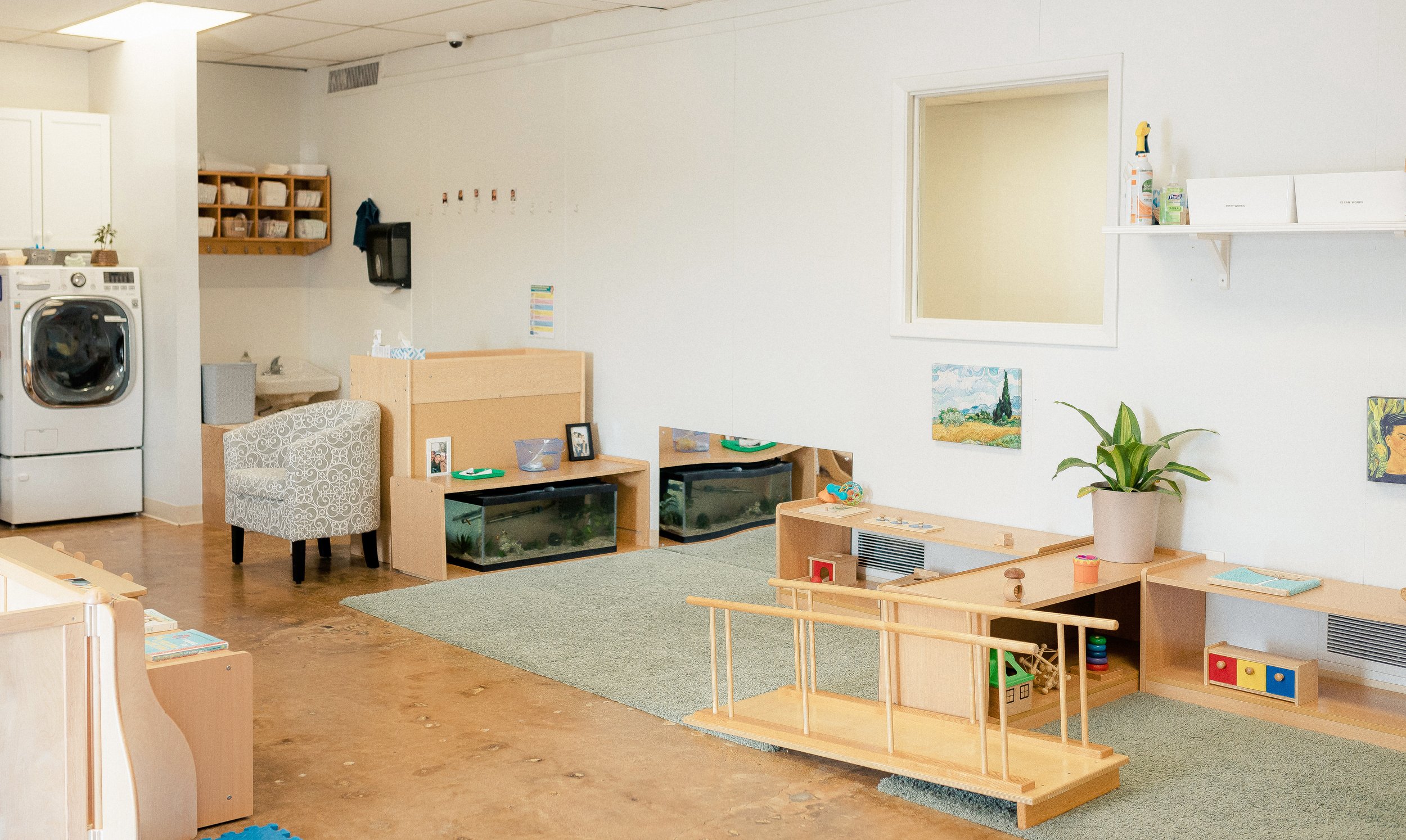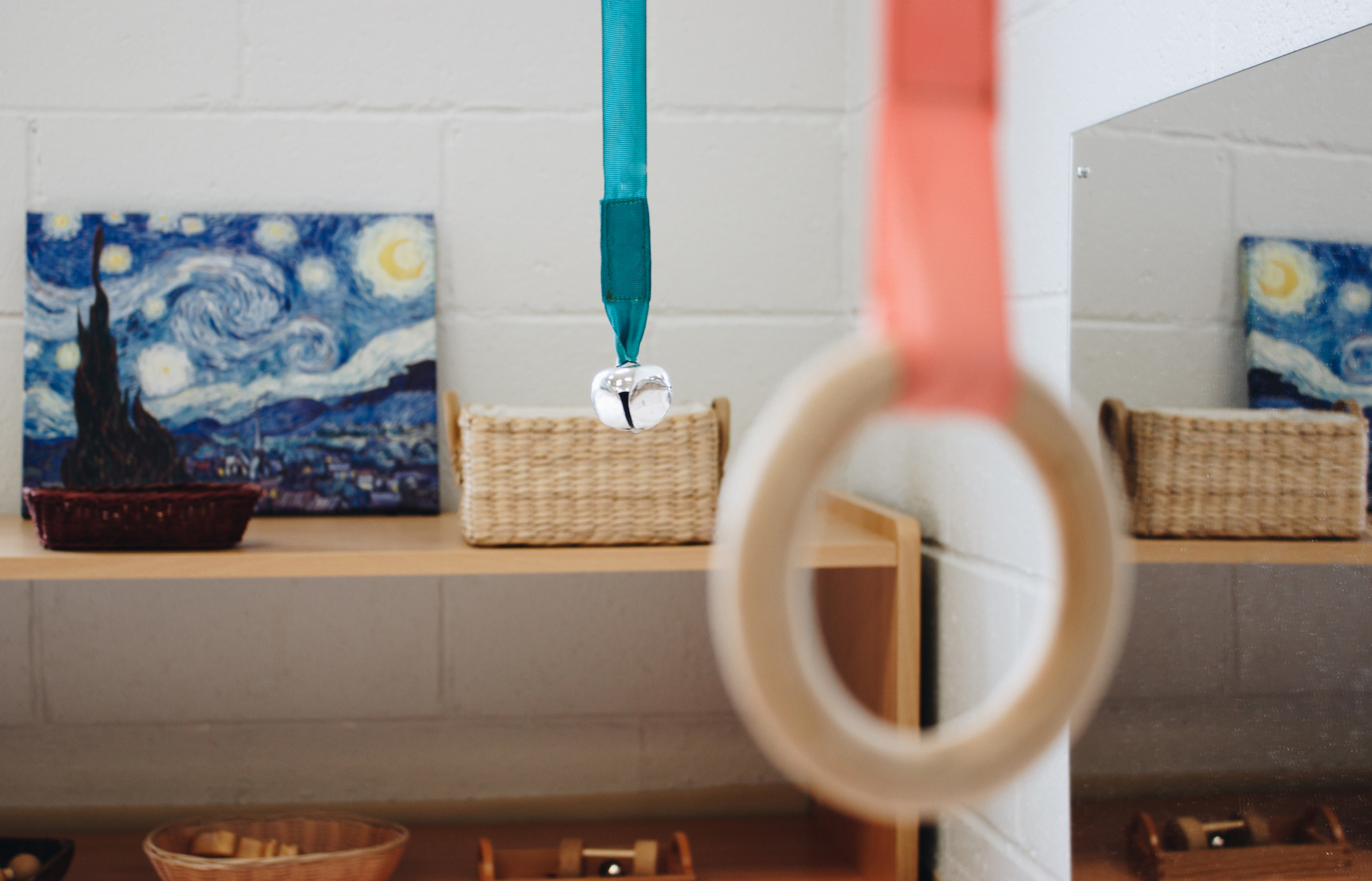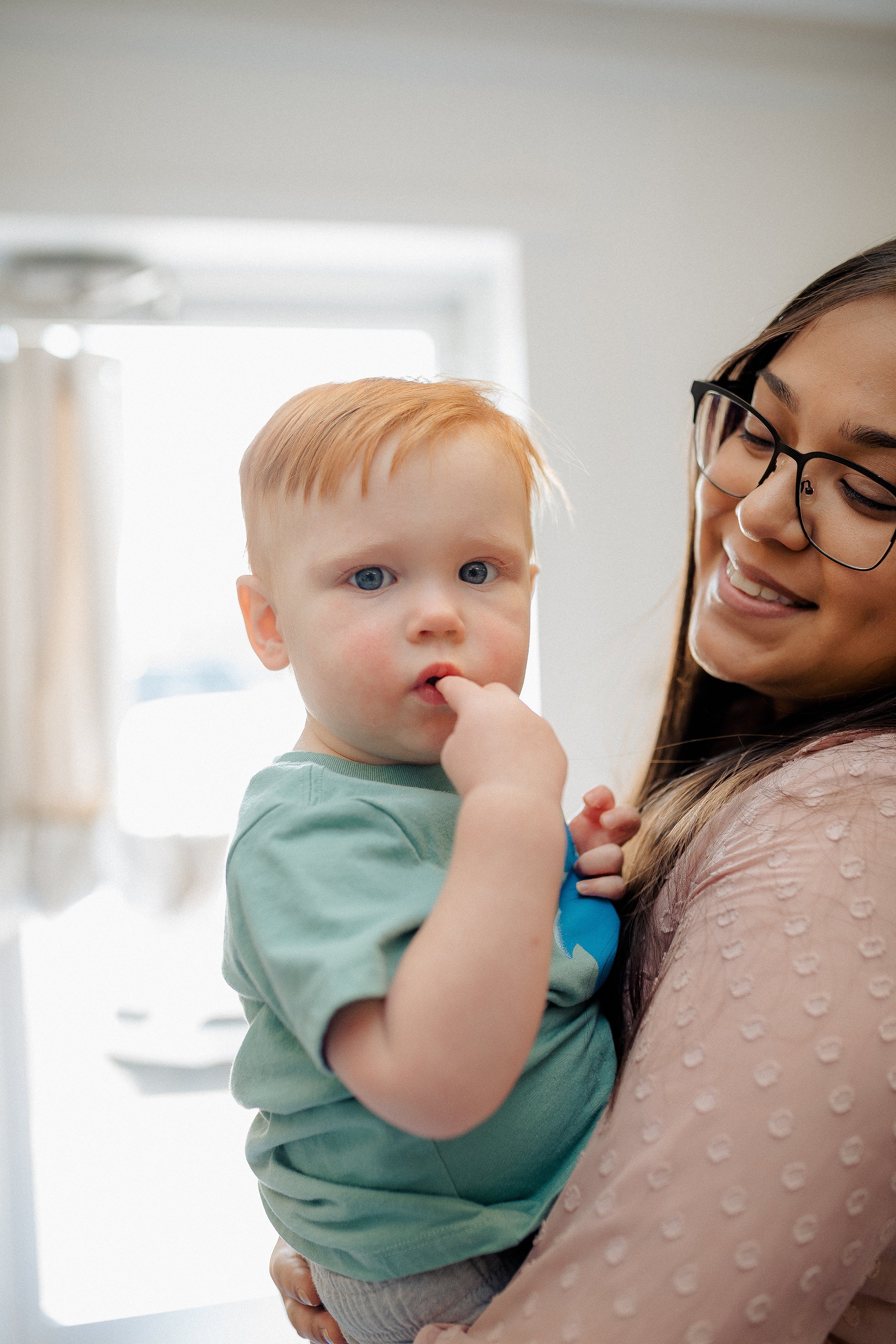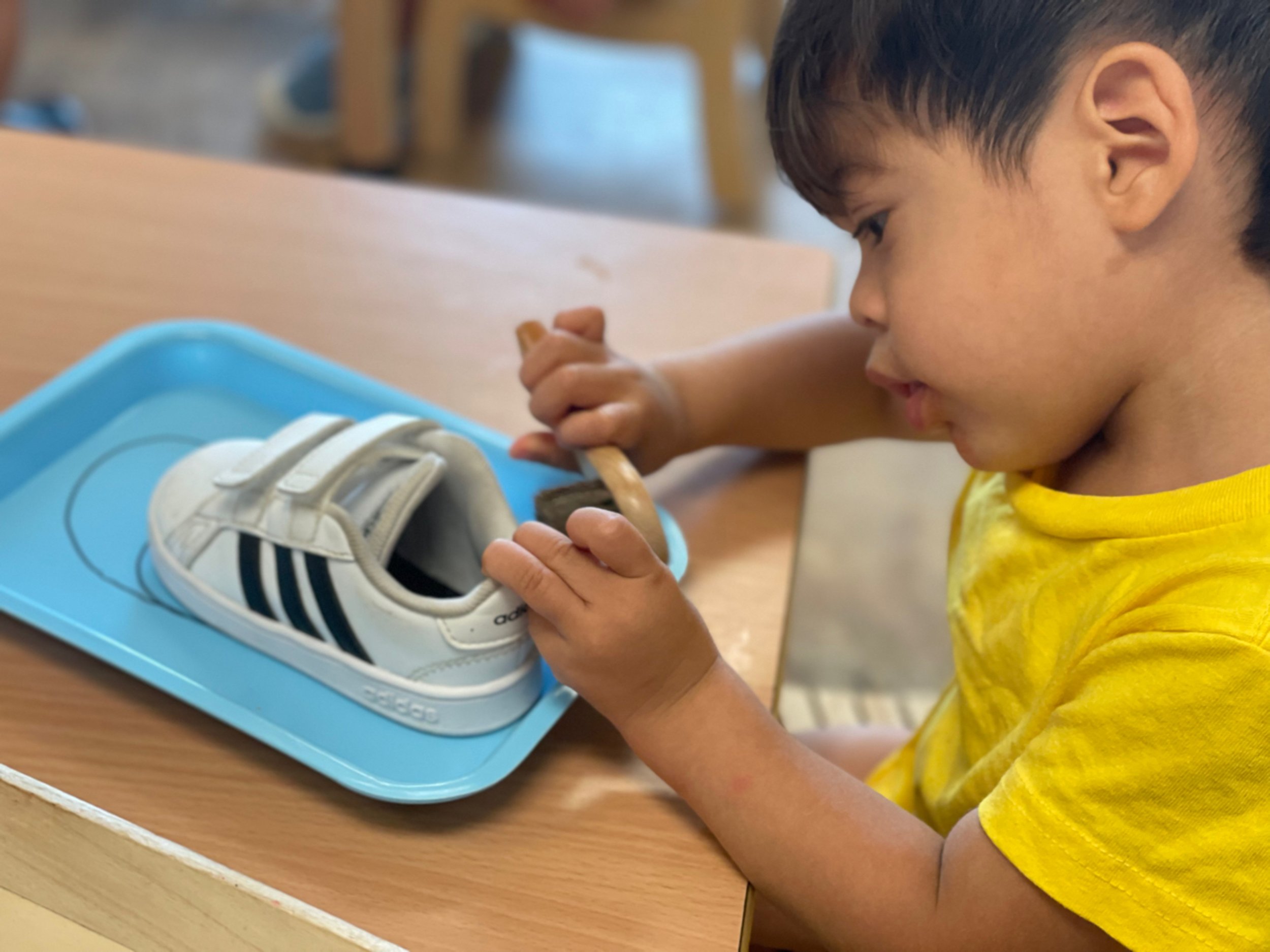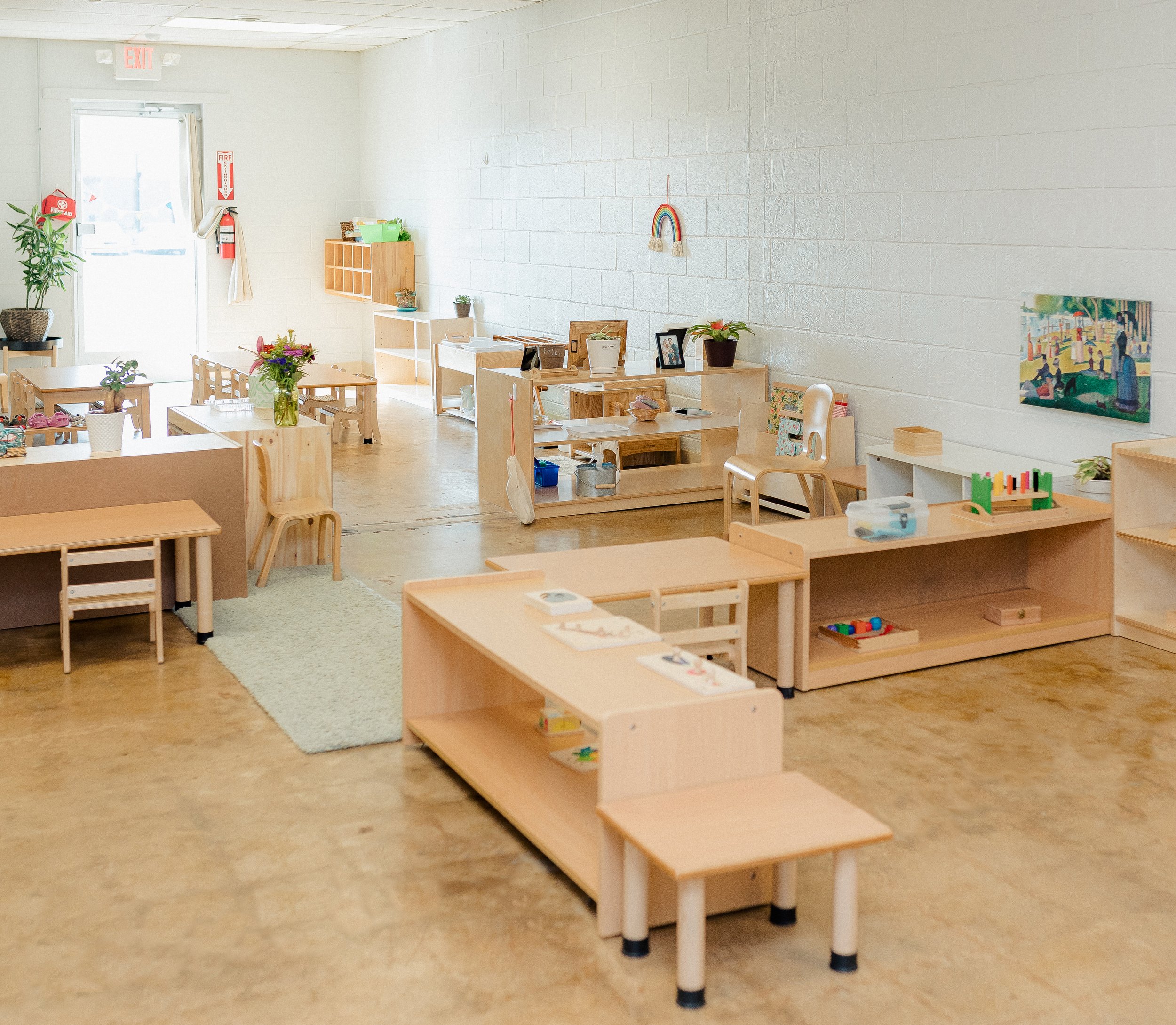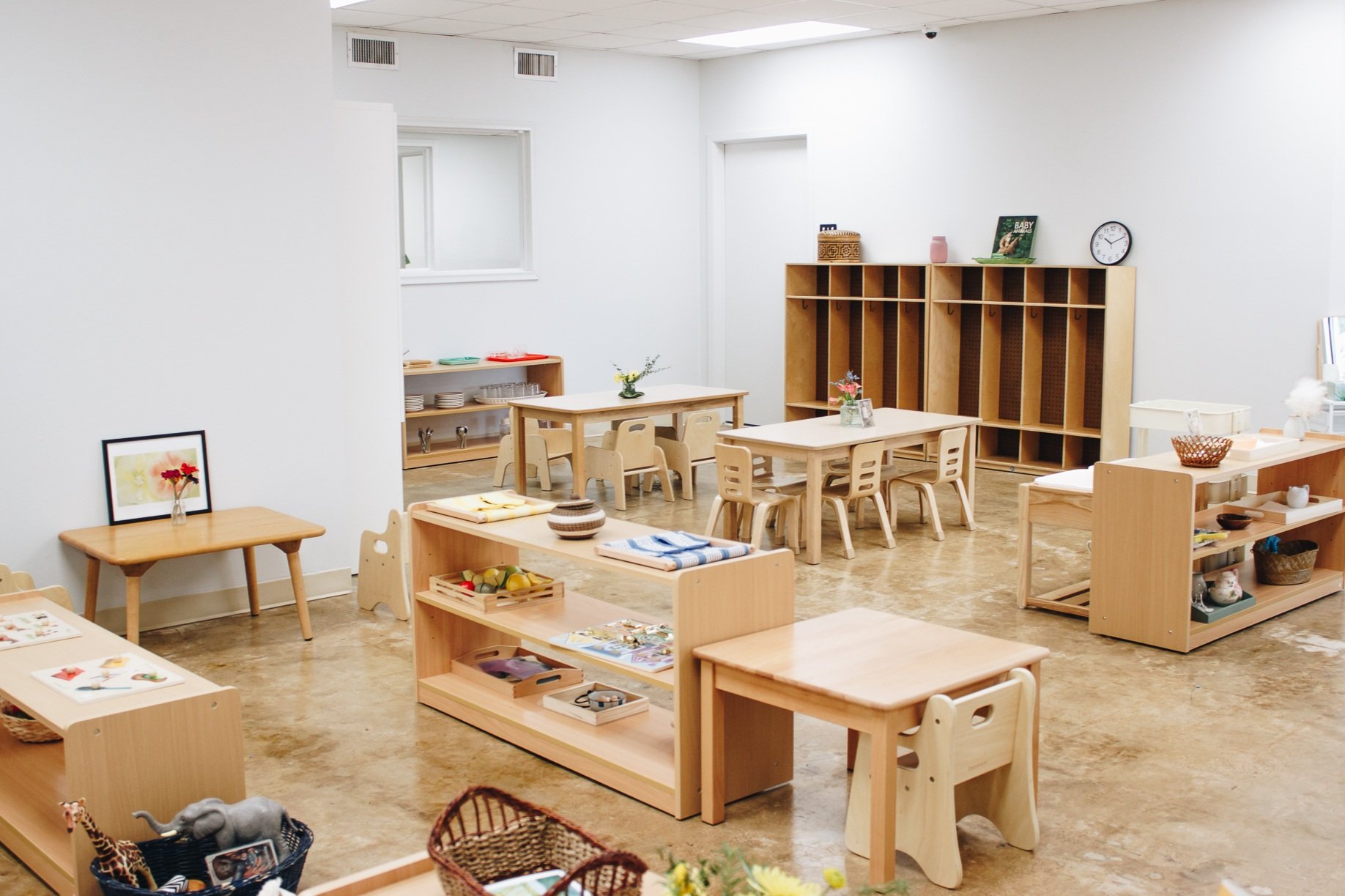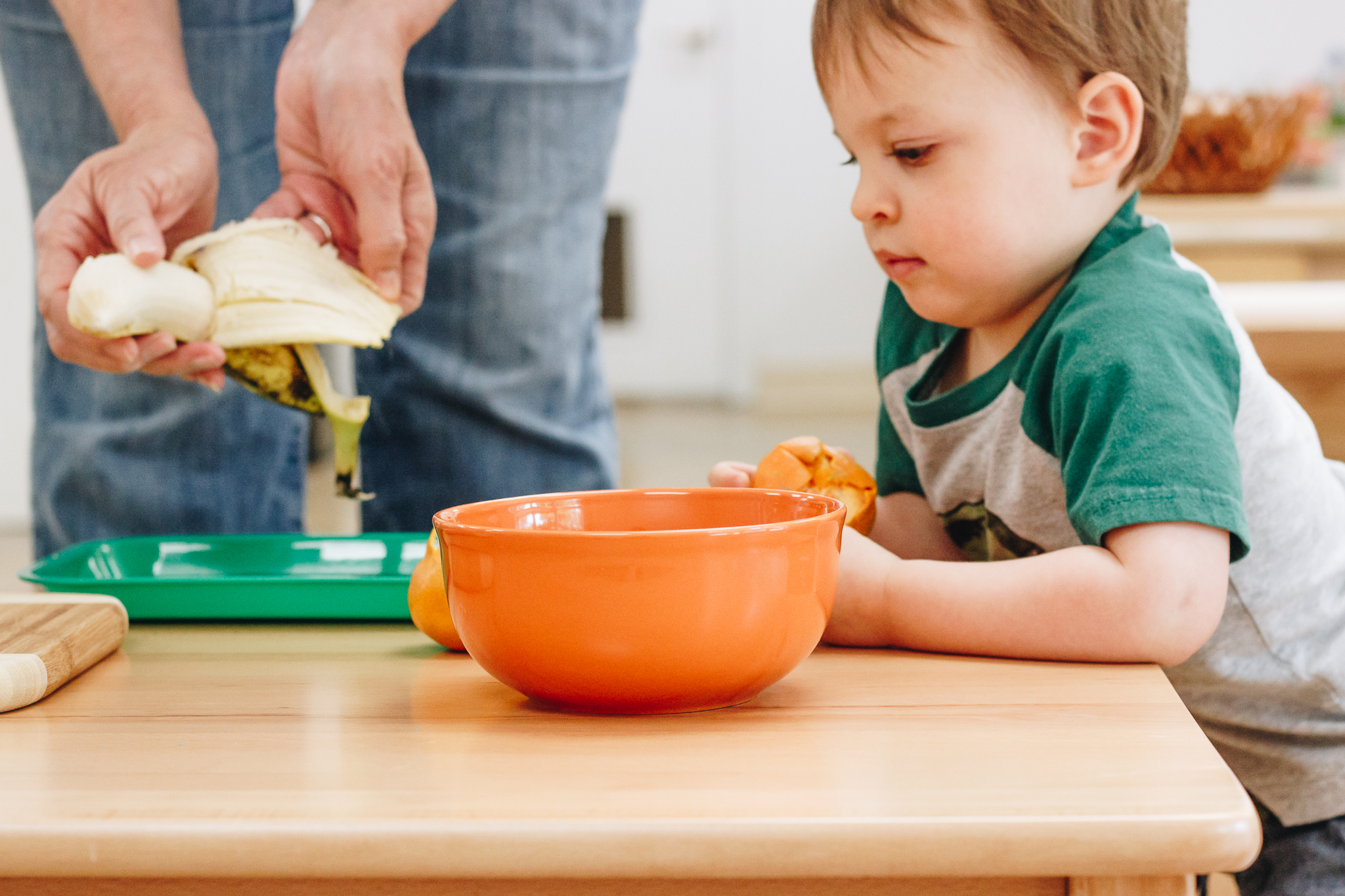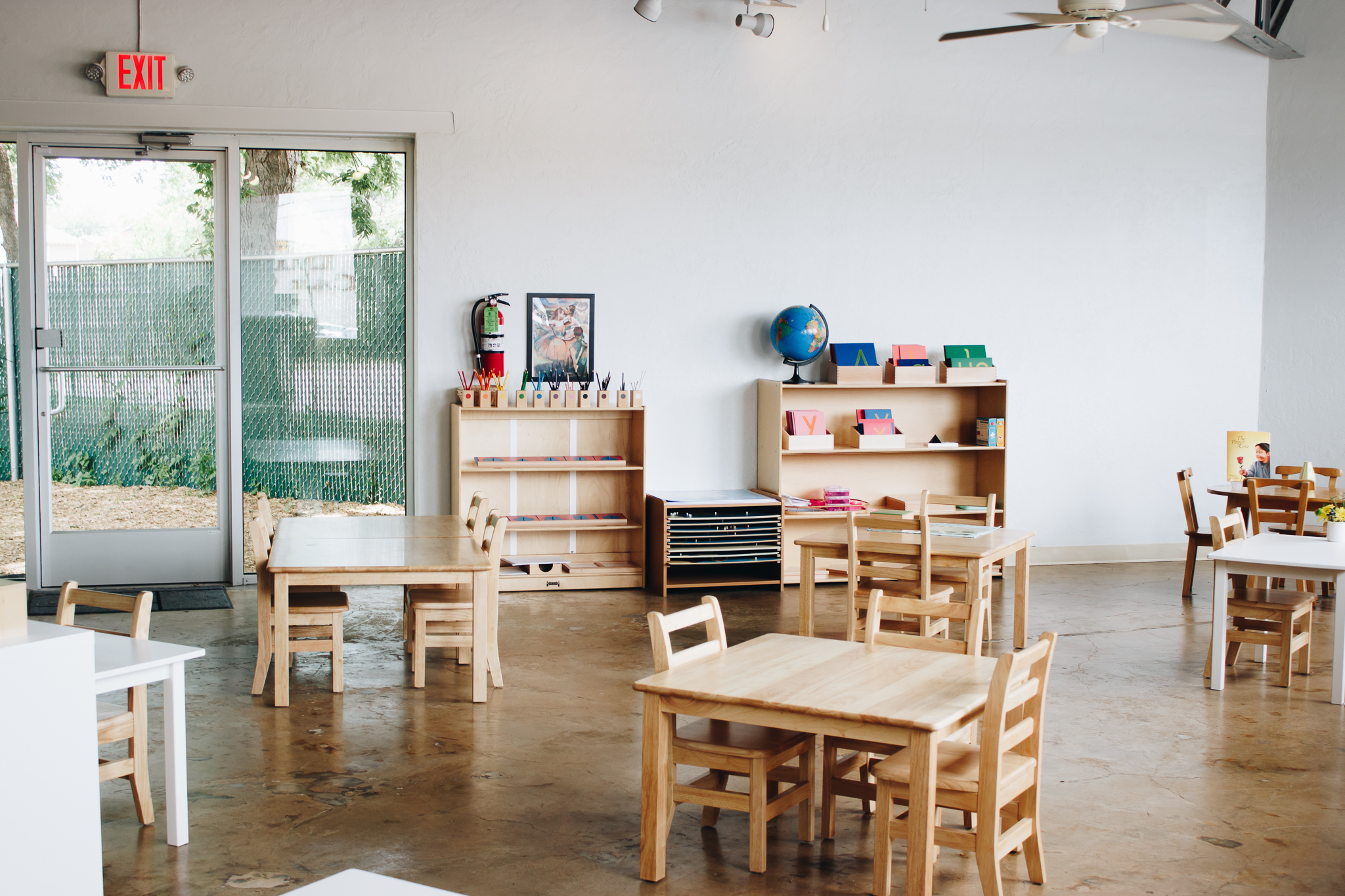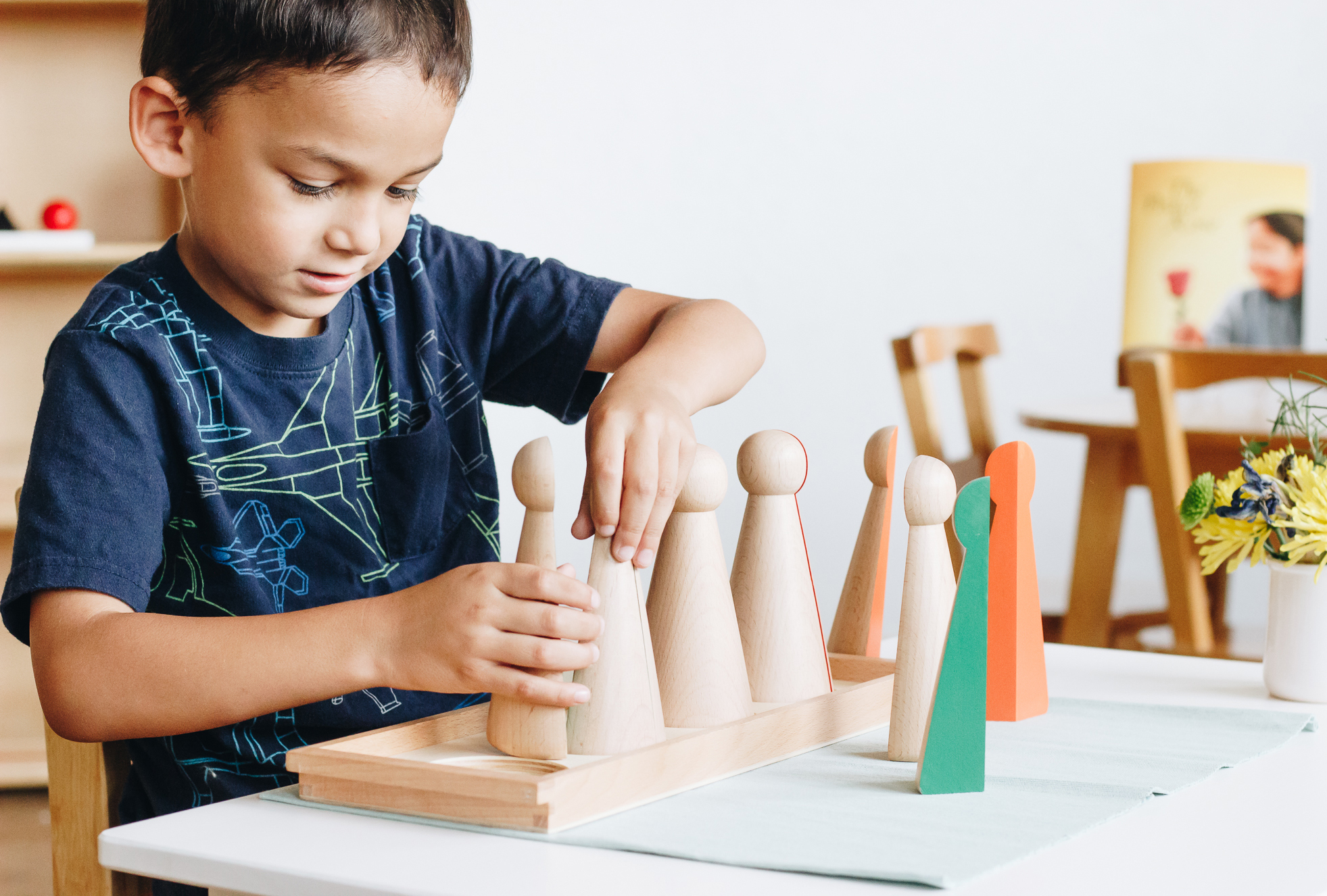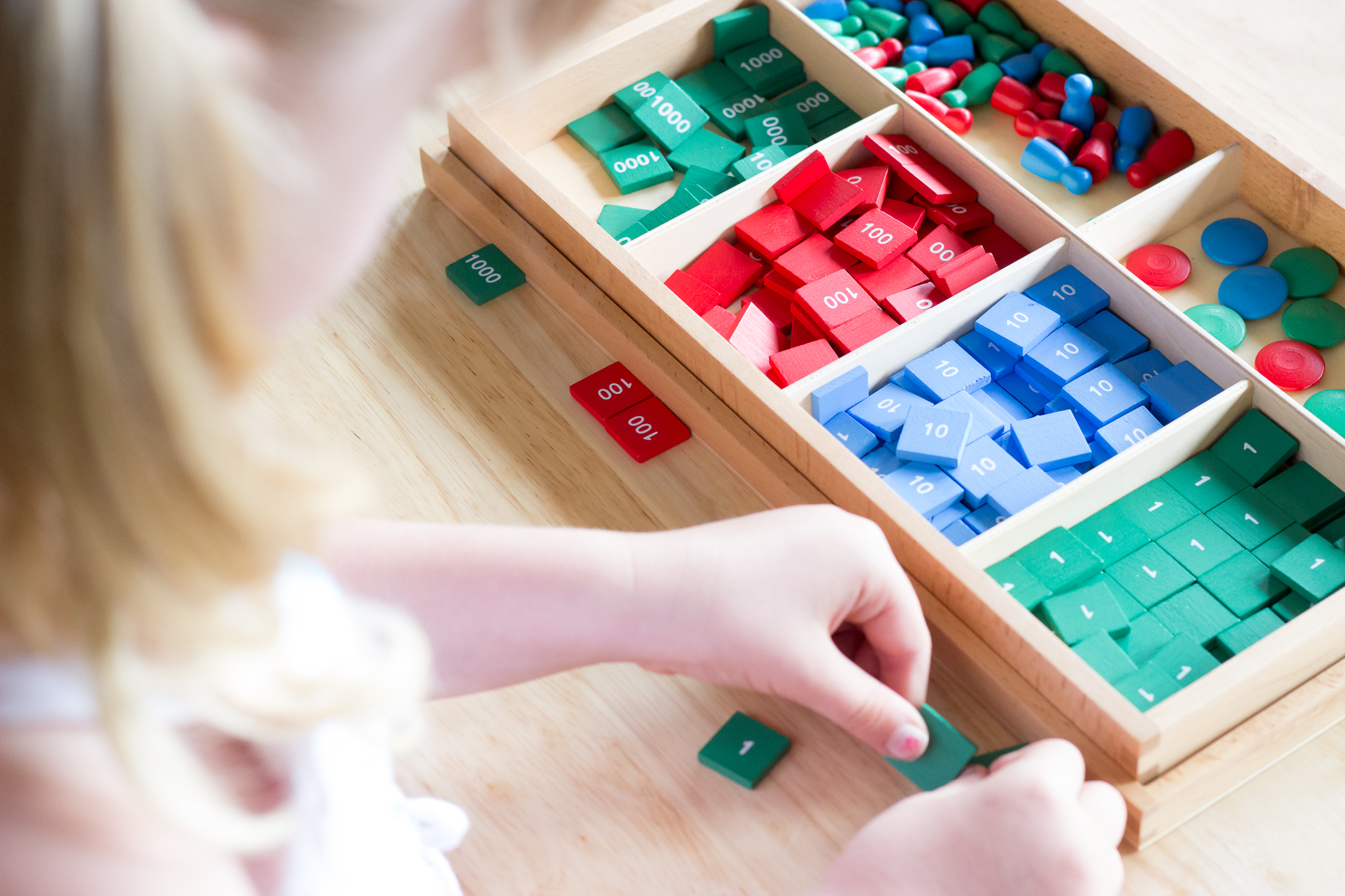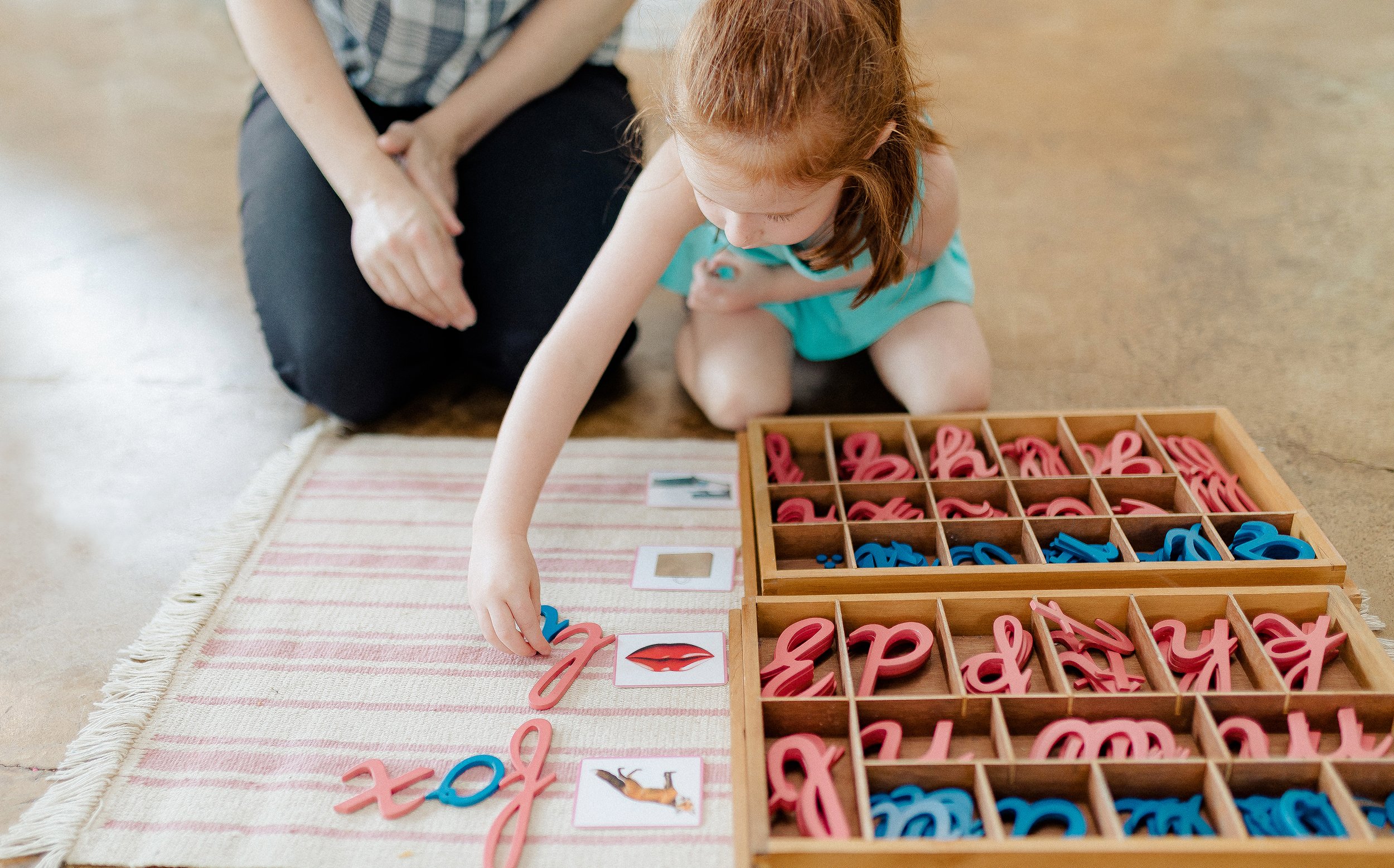Our Programs
At Liberated our aim is to educate the “whole” child by closely following the teachings of Dr. Montessori, while also incorporating gentle discipline, implementing low student teacher ratios, and focusing on positive interaction within our communities and environment.
Nido
Ages 6 weeks to 15 months old
The word “Nido” is derived from the Italian word meaning “nest” and conveys the warmth and security a child feels within her caregiver’s arms.
Liberated’s Nido is the first in Dallas to be certified by the Association Montessori Internationale (AMI), which is the oldest recognized authority on Montessori education worldwide. AMI is a community directly created by Maria Montessori to maintain and develop her pedagogy.
Our Nido environment serves eight to 10 children. We have one 0-3 Montessori Certified Lead Guide and three assistants. Teachers aide the child as he develops hand-eye coordination, grasping skills, fine and gross motor skills, language, and coordination of his body through movement.
There are many differences between a Montessori Infant environment and a traditional daycare setting. Our Nido students do not spend their active hours in playpens, jumpers, walkers or other containers.
In our Nido room you will see:
Soft floor mats on which babies can move freely and develop and hone their gross motor skills.
Mirrors positioned low to the floor to stimulate tummy time and self-discovery.
Low shelves with materials for fine-motor development and cause/effect, such as puzzles, rings on a post, and containers to open and close.
Pull and push toys to promote gross motor movement.
Low tables and chairs for snacks and solid meals.
Toddler
Ages 15 months to 3 years old
The Toddler classroom is designed to facilitate maximum movement and exploration, while fostering the child's independence.
This classroom serves twelve to 14 students with one Lead Guide and two assistants.
In our Toddler room you will see:
Pouring exercises, spooning, bead stringing, and water works. These Practical Life activities are aimed at enhancing the child’s development of fine motor control, hand-eye coordination, balance, sense of order, concentration, and independence.
Language materials and activities like books, puzzles, and beginning sound games.
Sensorial activities, including knobbed cylinders for practice with dimension, tactile exercises like rough and smooth boards, musical equipment, and sorting.
Toddlers are exposed to Math through counting games and concrete materials, which encourage the development of skills such as order, sequence, and visual discrimination. Toddler Math activities include stacking and nesting cubes, number blocks and puzzles, and sorting and counting materials.
Primary
Ages 3 to 6 years old
The curriculum in the Primary Classroom includes guided choices for activities during uninterrupted work cycles.
This classroom serves 24 to twenty six students. We have one Lead Guide and two assistants.
In our Primary room you will see:
Spaces suited for group activity, as well as areas where a student can settle in alone.
Low tables and chairs. Parts of the room are open and spacious, allowing the child to spread out her work on the floor if desired.
The five areas of the traditional Montessori classroom: Practical Life, Sensorial, Language, Cultural, and Mathematics. Each of these areas features shelves or display tables with a variety of inviting materials from which students can choose.
Botany, Geography and Geology as well as Physics and Chemistry are introduced in this classroom. These sciences are not taught simply for their implicit value; they are taught to give the child knowledge and thereby respect for the life around him.
This classroom has an area devoted to peace and reflection: a quiet corner and a “peace” table where children go to work out conflicts with other students or simply to reflect.





